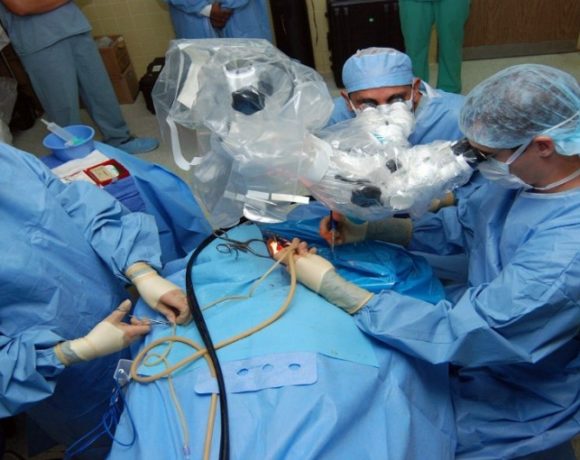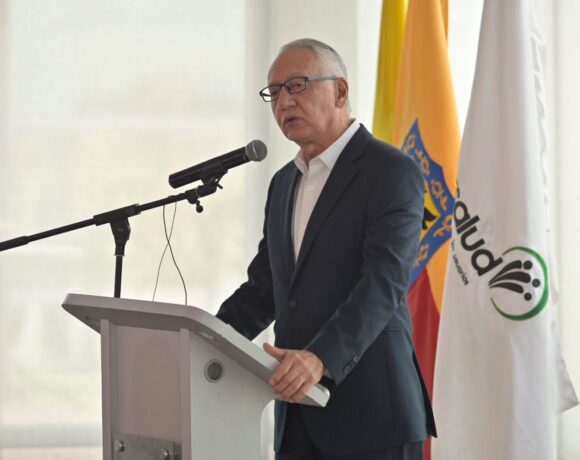Medicine in Medellin: Experts Prescribe National Health System Cures (Part Three)

While medical tourism is a growing business for metro Medellin thanks to a reputation for high quality and competitive prices, the national public health system is mired in a financial crisis (see Medicine in Medellin: The National Health Care System, Part Two).
However, while the financial problems are widespread across hospitals, clinics, government funding sources and the “EPS” networks (similar to the health maintenance organization (HMO) networks in the U.S.), not every hospital or clinic has the same magnitude of problems.
For example: Medellin’s prestigious Hospital Pablo Tobon Uribe – which has publicly complained of a near-collapse in its overcrowded emergency rooms because of a recent surge of indigent patients that were turned-away at other hospitals – nevertheless is nearing completion of a new wing that will double the size of its facilities.
“This is a crisis that has been brewing” for a long time, said Pablo Tobon Uribe hospital director Andres Aguirre in a recent television interview. “It’s much more than just a shortage of money. We also need to be more efficient, and we need to widen our health care infrastructure.”
Meanwhile, the equally prestigious, Medellin-based Clinica de Las Americas likewise recently raised funds through a share offering in order to launch construction on a new, 10-story clinic in the neighboring city of Envigado — despite its similar problems in getting paid its past-due bills by EPS organizations.
Both of these hospitals are members of the Salud Sin Fronteras (SSF) network, which promotes medical tourism to Medellin.
Asked how some of Medellin’s hospitals and clinics can continue to grow despite problems with overdue bills pending at EPS networks, SSF marketing coordinator Ana Maria Arboleda told Medellin Herald that some health providers are organized as foundations (or other types of legal entities) that can tap alternative funding sources such as certain government agencies, private investors and multilaterals (the World Bank, for example) for capital projects.
Televid Debate
Meanwhile, in a special August 23 public broadcast on Medellin-based TV station Televid, four of Medellin’s top health-sector experts — including two members of the SSF network — diagnosed Colombia’s health-care financing issues and suggested several treatments that could overcome the crisis.
EPS Sura director-general Gabriel Mesa kicked-off the discussion by pointing to the soaring costs of mandatory “plan obligatoria de salud” (POS) services, which require EPS network hospitals and clinics to provide virtually “unlimited” services – but with very limited funding.
Savia Salud EPS director Carlos Mario Ramirez added that “non-POS” services also can be mandated via “tutelas” (patient lawsuits).
A laryngeal transplant, for example, isn’t included in the “POS” list. But current law makes it possible for any Colombian – even those without any financial resources – to have a “right” to such a transplant, he explained.
Even a 95-year-old man with a very limited remaining-life expectancy notionally has a “right” to a “free” laryngeal transplant — at heavy costs to taxpayers, hospitals and EPS’s, under the law, he said.
Yet such an unlimited “right” would seem especially questionable to citizens and taxpayers in Colombia, a supposedly “third-world” country that doesn’t have anywhere near the health-care financial resources of (for example) the United States, Japan or many European countries.
However, if Colombian government health regulators and the judicial system eventually move to define a more-rational system of “rights” to health care — including reasonable care for those who today pay little or nothing — then perhaps “free” or subsidized laryngeal transplants (for example) could be limited to more cost-effective situations, such as for 50-year-old persons, Ramirez added.
Other examples of unwise management of very limited health funds also help explain Colombia’s current national health system crisis, he said.
“Half of the people with hypertension in Colombia are walking around without [proper medicine] because we’ve lost the focus on basic medical services,” Ramirez said.
With hypertension now the second-leading cause of kidney failure, this means that some improperly treated hypertension patients “are going to need a kidney transplant, which of course is much more costly” than the preventive medicine, he added.
“We’re spending way too much money on the Tier-2 and Tier-3 [higher-complexity, specialist] services, but Tier-1 [basic and preventive services] ought to resolve 70% of the health problems,” Ramirez said. “We could double our [national health-care] spending but still wind up in the same situation we’re in now.”
EPS Sura’s Mesa added that while Colombia’s Constitutional Court has mandated health-care as a “right,” the government hasn’t provided nearly enough money to pay for the “subsidized” patients. “We either need more control [over mandated health services] or more financial resources, or both,” he said.
Today, Colombia’s health system spends COP40 billion (US$12.6 billion) annually, or less-than US$500 per-person, per year. This compares to US$7,000/year per-capita in the United States, $4,000/year per-capita in France and $2,000/year per-capita in Argentina, Mesa said.
“The only way out of this crisis is for [all the various health-care participants] to work together,” Mesa said. “We have to decide what is the best way to use the money we have.”
Hospital Universitario San Vicente Fundacion director-general Julio Ernesto Toro added that the funding crisis is likely to get worse because “everyone wants the latest medical technology” but not everyone is paying for it. “We have the best technology in Antioquia, compared to all of Colombia, but these are expensive procedures, yet people want it for free.”
While various health-policy experts and health-industry officials have maintained a heated debate about whether to make radical changes to the structure of Colombia’s health system – such as abolishing the EPS’s altogether – this is a sterile debate, Mesa argued.
If the EPS’s are abolished, then some other health network organizers — perhaps along-the-lines of the U.S. HMO networks or else the “preferred provider organization” (PPO) networks – inevitably would arise, he said.
Reason: Patients need an organized, central network in order link-together the right doctor, the right clinic, the right diagnostic laboratories, the right hospital, for each type of ailment. They can’t just search through phone books to knit-together their own network of providers every time they get sick, since most patients aren’t good at self-diagnosis, self-testing and self-treatments, and hence don’t know where to turn.
Colombia’s Constitutional Court also needs to provide more rational guidance on health-care services and limits, so that government health regulators and lower-court judges can be “educated” on which procedures and medications are reasonable for certain situations (such as costly transplants for indigent 95-year-olds versus more logical transplants for 50-year-olds), he added.
Clinica CardioVid director-general Mauricio Tamayo added that “84% of CardioVid unpaid bills are from 10 EPS’s.”
What’s more, Clinica CardioVid recently decided to stop accepting patients affiliated with the “Nueva EPS” system because that network organization is more than 700 days behind in paying their bills, he said.
Meanwhile, according to Colombia’s national health superintendent (Superintendencia Nacional de Salud), those 10 EPS organizations cited by CardioVid are now collectively COP2.5 billion (US$788 million) in debt, he added.
“So the system needs more funding. The government must unite and not divide the system,” as the current divisions pit health providers, EPS organizations, the courts and the public treasuries (national, departmental and local) against one-another.
San Vicente Fundacion’s director-general Toro added that the “Ley 100” legislation in 1993 gave all Colombians the right to hospital and clinic services. But this law also created a health system with economic interests.
Incorporating economic interest in such a health system is “legitimate,” he said, as economic incentives can stir efficiency and innovation. “But now we don’t have a ‘health system’ [per-se] but rather a ‘system of care delivery’ [sistema de prestacion de servicios asistenciales],” he added.
“A real health system goes way beyond what we have today. People suffer with the system we have today,” he said.
However, Colombia’s pre-“Ley 100” health system also rationalized services, Ramirez added. For example, one of Medellin’s most famous plastic surgeons (Jaime Respinal) in 1989 reattached a severed left hand of an indigent farm worker, garnering national notoriety.
This procedure was deemed “necessary” because this farm worker was left-handed and thus couldn’t do work without that hand, he said. But if the procedure hadn’t been designated as “necessary,” then this surgery wouldn’t have been performed at all — unless the patient could pay for it.
“But today, Colombian law would require every severed hand to be reattached” no matter whether the resulting treatment was “necessary” for an indigent patient’s ability to continue working, he added.
“We have a health insurance policy that supposedly covers everything, but the money isn’t there to cover everything,” San Vicente’s Toro concluded.
















